Writing Teaching Resources
Teaching writing strategies and the writing process this school year? Explore a comprehensive collection of teacher resources for elementary and middle school ELA teachers — all created by teachers!
Stocked with graphic organizers, writing prompts, templates, worksheets and so much more, this collection of printable and digital activities is designed to help you as you help your students become more effective communicators and unleash their creativity and imagination.
Save time on lesson planning with resources that have been through a careful review process by an expert member of our teacher team to ensure they're ready for your classroom and your students!
Are you looking for tips and tricks to add to your teacher toolkit this school year? Read on for a primer from our teacher team, including engaging activities for teaching writing in elementary and middle school and a look at some of the different writing strategies your students will need to learn.
11 Writing Strategies Kids Should Know by the End of Middle School
We can't talk about teaching kids to write without talking about the different writing strategies that can help them do just that!
When it comes to teaching our students to become confident writers who articulate their ideas effectively, here are some of the strategies our teacher team prioritizes:
1. Brainstorming
Brainstorming is something we often do in the classroom, and it's a crucial part of learning to generate the ideas that will drive students' writing as they progress through their educational journey. Kids should know how to create a list of potential topics or points related to a particular writing assignment.
With younger students, this is often done as a whole group by writing ideas and points on chart paper. In upper grades, students transition over to using text-based materials to generate ideas and talking points.
2. Outlining
Before diving directly into any assignment, our students should be able to create a structured framework or outline. Teaching students how to create this outline will help them organize their thoughts and arguments for penning their essays, reports and research papers.

3. Using Graphic Organizers
Technically graphic organizers are classroom tools, so you may not think of their use as a writing strategy per se. However, learning to use these tools is another means of providing kids with the tools they need to organize their ideas and information before they sit down to write.
These organizers are particularly useful for expository writing — students can use them to outline main ideas, supporting details, and transitions.
Students can also take advantage of story maps when they are working on narrative writing to plot the key elements of a story, such as characters, setting, conflict, rising action, climax and resolution.
Graphic organizers such as the OREO strategy and hamburger paragraph are also great tools for students to use when working with opinion and persuasive texts.
4. Freewriting
Writer's block is the enemy of creativity, and it can easily frustrate young students who don't know where to begin.
When students freewrite, they write continuously without worrying about grammar or punctuation. This writing strategy can be extremely freeing — hence the name! — and helps frustrated writers move past that writer's block, generating fresh ideas.

5. Peer Editing
Learning to review and provide constructive feedback on each other's work is a great writing strategy to employ in your classroom to help students improve their writing quality and enhance their editing skills.
The strategy allows your students to learn from one another, and it arms them with an important tool they can use well into the future — calling on peers to provide a critical eye to a piece of writing.
6. Using Sensory Language
Working on descriptive writing? With this writing strategy, students engage the reader's senses through vivid and sensory language to create a more immersive experience.
7. Including Transitions and Connectives
As students become more proficient in the writing process, learning to use transitional words and phrases allows them to create smooth transitions between sentences and paragraphs. This strategy makes their writing more coherent and polished.
8. Incorporating Evidence
In persuasive, opinion, and expository writing, students are taught to support their claims with evidence and examples to strengthen their arguments.
It takes some practice to train your students to use evidence in their writing, so it's often a good idea to start with something simple, like the R.A.C.E.S. strategy.
9. Crafting a Thesis Statement
In expository, opinion, and persuasive writing, crafting clear and concise thesis statements that summarize the main point or argument of their essay helps students be more focused and organized in their writing. This strategy can also have the effect of empowering students to express their ideas confidently and persuasively.
10. Incorporating Introductions and Conclusions
With this strategy, students practice crafting effective introductions and conclusions that grab the reader's attention and leave a lasting impression.
11. Following a Revision Checklist
Teaching your students to use a revision checklist is a strategy that will help them be more self-reflective, evaluating their own writing against the checklist criteria and becoming more aware of their strengths and weaknesses.

- Plus Plan
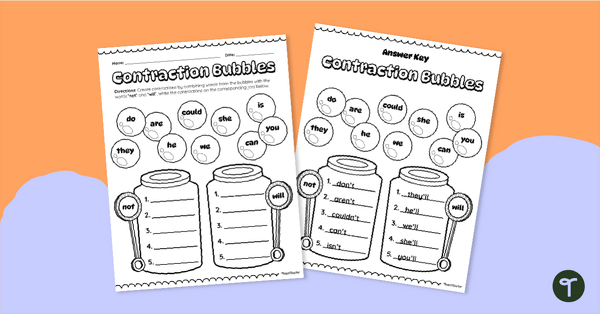
Contraction Bubbles Worksheet
Practice matching words to create contractions with this fun bubble-themed worksheet.
- Plus Plan
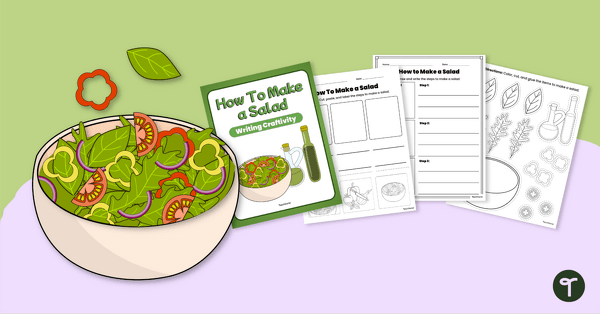
How to Make a Salad – Procedural Writing Craftivity
Use this engaging craft activity on making a salad to teach your students all they need to know about procedural writing!
- Plus Plan
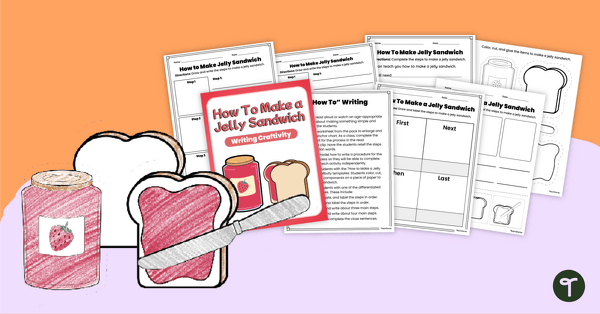
How to Make A Jelly Sandwich - Procedural Writing Craftivity
Teach your students all they need to know about procedural writing by exploring how to make a jelly sandwich!
- Plus Plan
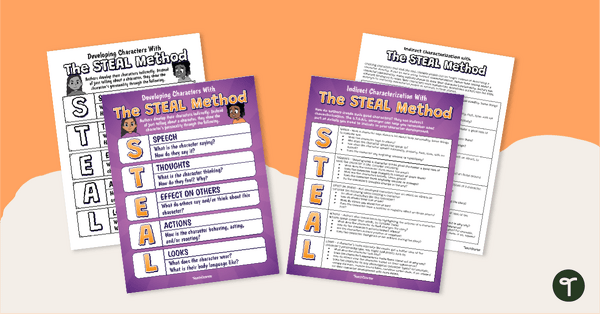
STEAL Characterization Anchor Charts
Use the S.T.E.A.L. method of characterization to help your students ‘steal’ the show with their writings using handy printable anchor charts.
- Plus Plan
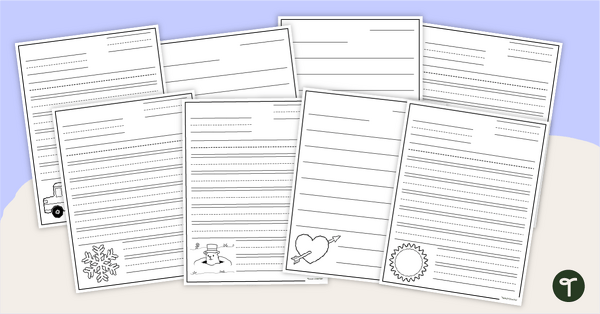
Themed Letter Writing Template Pack
Print and use a letter writing template each month to encourage your students to write friendly letters.
- Plus Plan
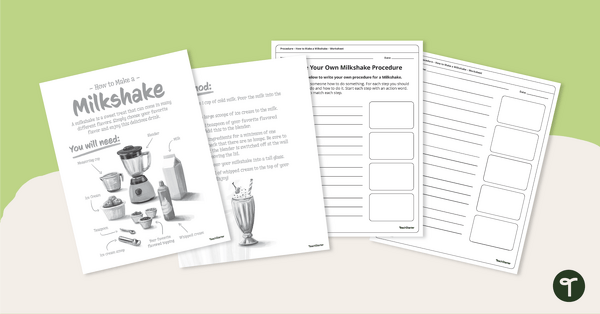
How to Make a Milkshake – Procedural Writing Worksheet
Explore how to make a milkshake while your students fine-tune their procedural writing skills.
- Plus Plan
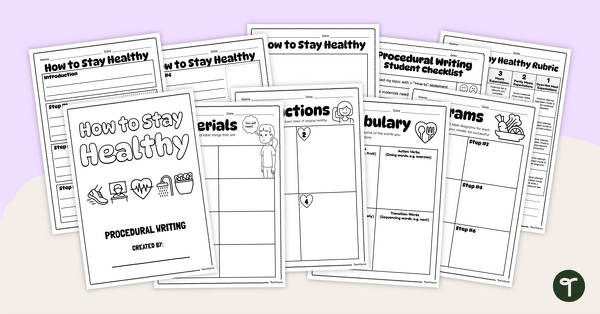
How to Stay Healthy – Procedural Writing Project
Get your students writing high-quality procedure texts with this fun “How to Stay Healthy” procedural writing project.
- Plus Plan
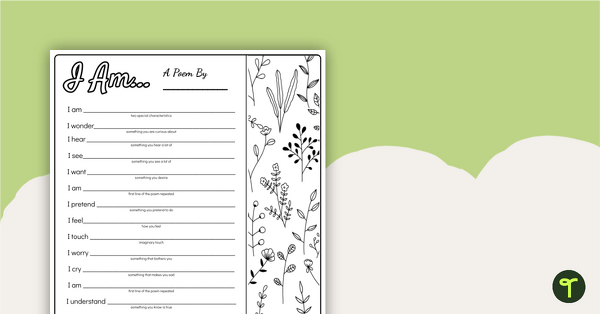
I Am Poem Template
Get to know your students and create back-to-school poems with a printable ‘I Am… Poem template.
- Plus Plan
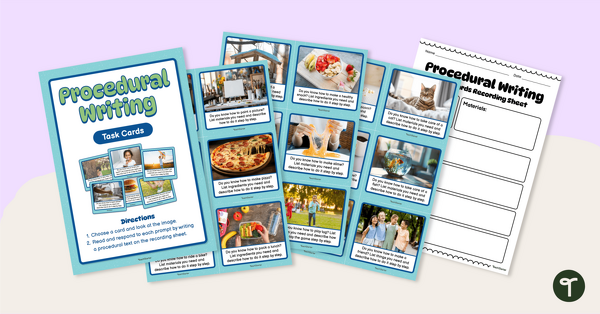
Procedural Writing Prompt Task Cards
Need some procedural writing ideas? Download these task cards to use as a writing center activity during your procedure writing unit.
- Plus Plan
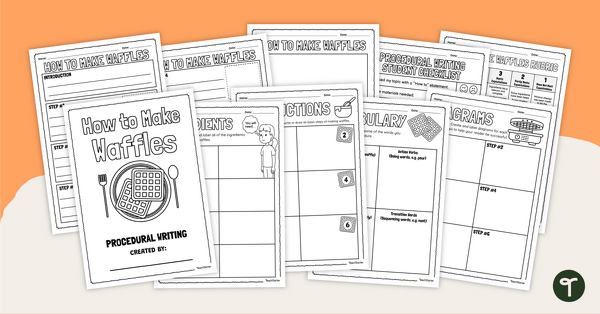
How to Make Waffles - Procedural Writing Project
Get your students writing high-quality procedure texts with this fun “How to Make Waffles” procedural writing project.
- Plus Plan
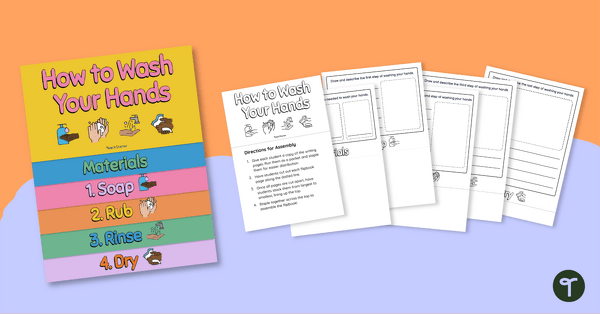
How to Wash Your Hands Flipbook
Use this “How to Wash Your Hands” procedural writing activity to help familiarize your students with the structural elements of procedure texts.
- Plus Plan
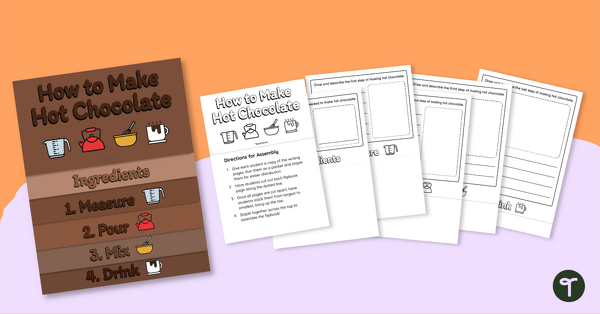
How to Make Hot Chocolate Flipbook
Use this “How to Make Hot Chocolate” procedural writing activity to help familiarize your students with the structural elements of procedure texts.
- Plus Plan
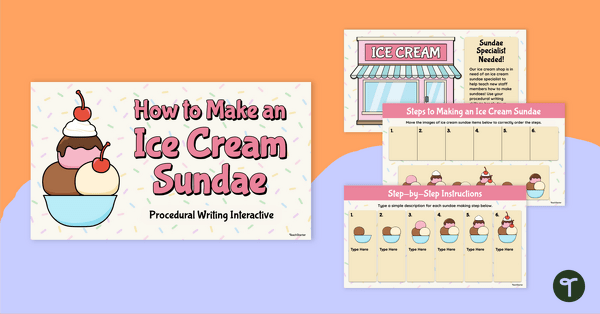
How to Make an Ice Cream Sundae Interactive Activity
Use this “How to Make an Ice Cream Sundae” procedural writing interactive activity to model the purpose, structural elements and language features of procedure texts.
- Plus Plan
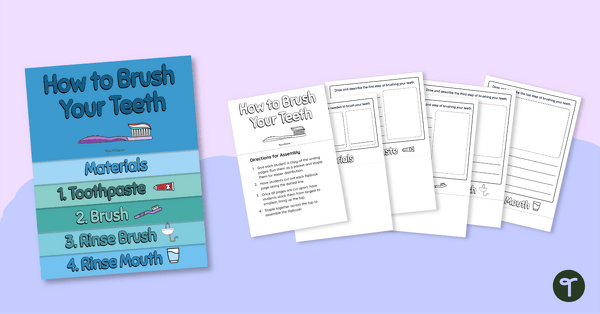
How to Brush Your Teeth Flipbook
Use this “How to Brush Your Teeth” procedural writing activity to help familiarize your students with the structural elements of procedure texts.
- Plus Plan
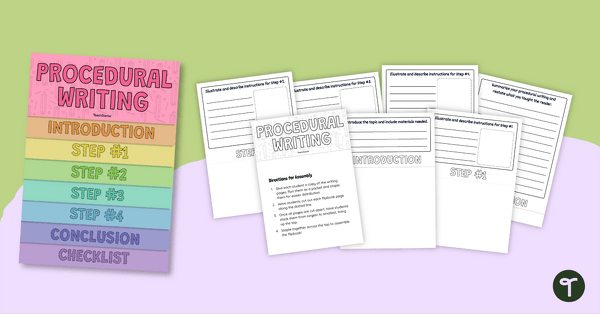
Procedural Writing Flipbook
Get your students to write a procedure text using this easy-to-compile flipbook scaffold.
- Plus Plan

Elements of Poetry Teaching Slides
Explore the key elements of poetry with your students using this comprehensive and age-appropriate slide deck perfect for your poetry writing unit.
- Plus Plan
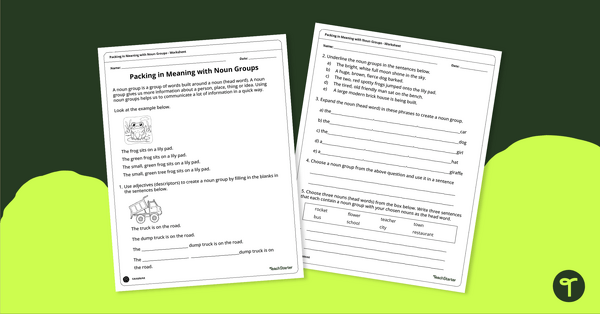
Packing in Meaning with Noun Groups Worksheet
Explore the concept of noun groups with this 2-page worksheet.
- Plus Plan
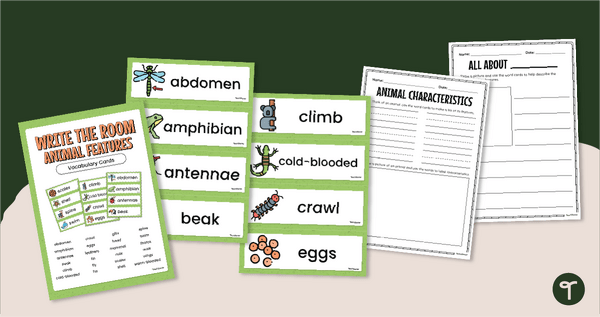
Animal Characteristics - Write the Room Activity
Help your young students read and write about features of animals with a printable Animal Characteristics Write the Room activity.
- Plus Plan

Polar Bear Craft Template
Pair a polar bear craft and informational writing to create a fun winter animals bulletin board.
- Plus Plan

'If I Were a Bowerbird...' Writing Stimulus
Get students thinking and writing about what they would collect, or what they would do if they were a bowerbird.
- Plus Plan
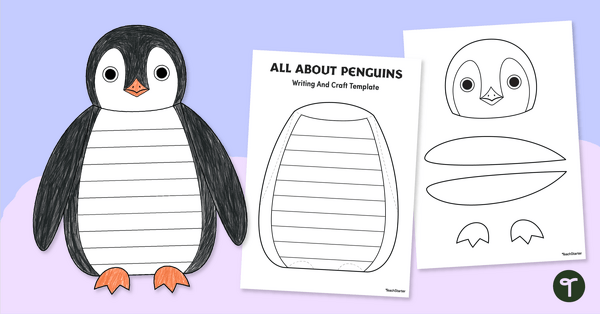
Penguin Craft & Writing Template
Research and write about penguins and their adaptations, then create a fun penguin craft to display student work.
- Plus Plan
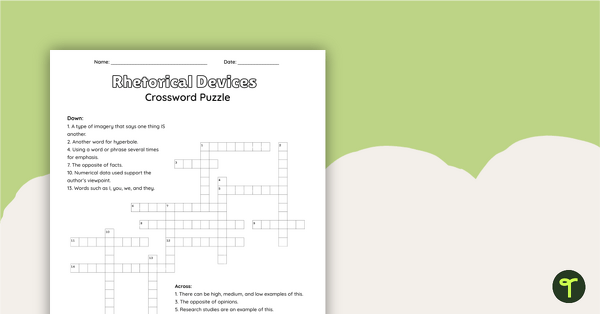
Rhetorical Devices Crossword
Familiarize your students with the most common rhetorical devices with an engaging crossword puzzle.
- Free Plan
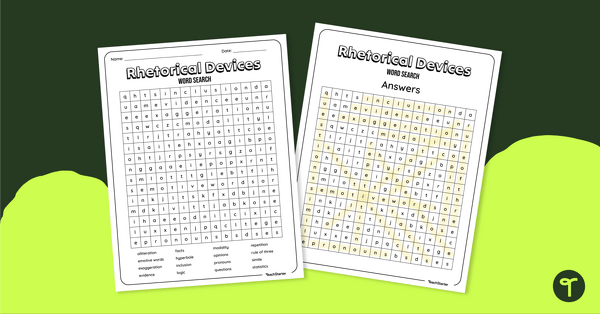
Rhetorical Devices Word Search
Familiarize your students with the most common rhetorical devices with a fun word search.
- Plus Plan

Exaggeration and Hyperbole Interactive Activity
Explore hyperbole examples with your students using this digital game perfect for lesson warm-ups or lesson wrap-ups.
- Plus Plan
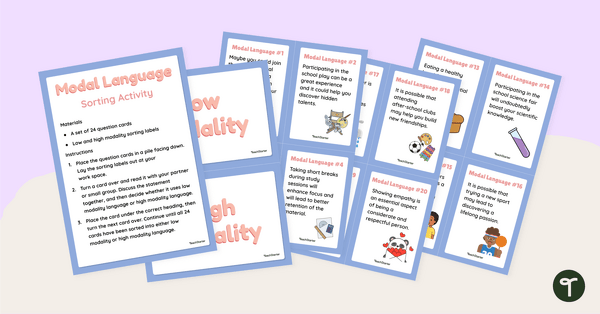
Modal Language Sorting Activity
Explore examples of modal language with your students using this set of 24 sorting cards perfect for your persuasive writing unit.
- Plus Plan
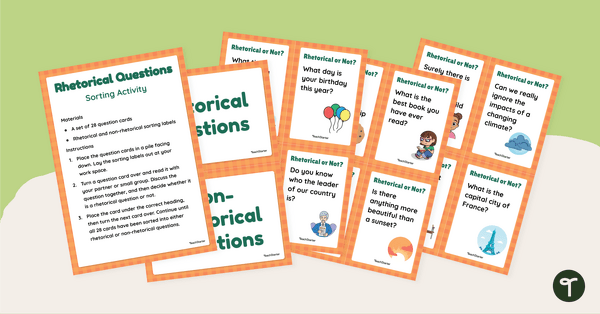
Rhetorical Questions Sorting Activity
Explore examples of rhetorical questions with your students using this set of 28 sorting cards perfect for reading centers.
- Plus Plan
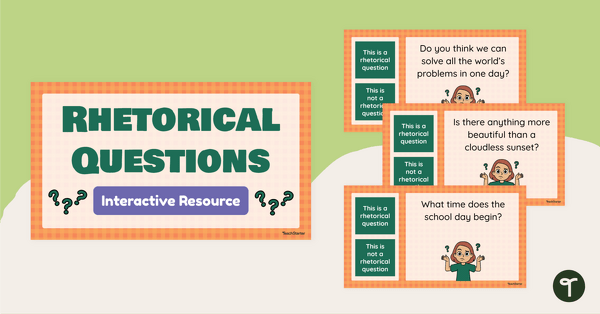
Rhetorical Questions Interactive Activity
Explore rhetorical questions with your students using this digital game perfect for your persuasive writing lessons.
- Plus Plan
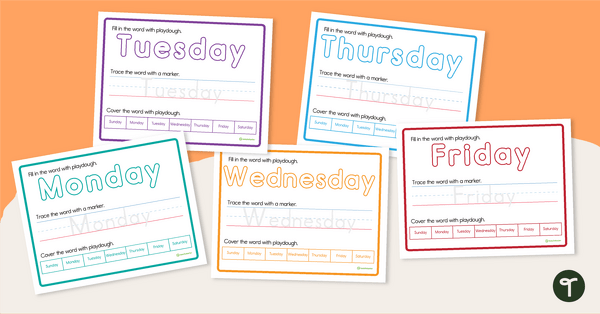
Days of the Week Playdough Mats
Use playdough mats to help your students identify, sequence and spell the days of the week.
- Plus Plan
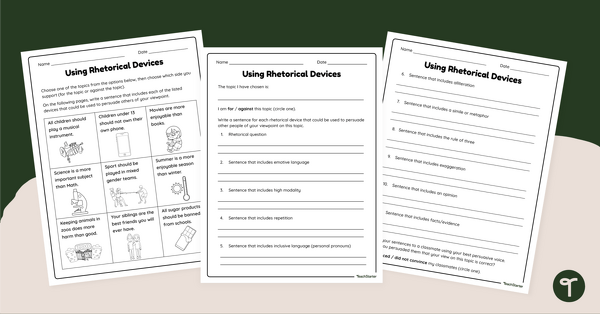
Using Rhetorical Devices Worksheet
Use this rhetorical devices worksheet to help your students create rhetorical device examples based on a specific topic.
- Plus Plan
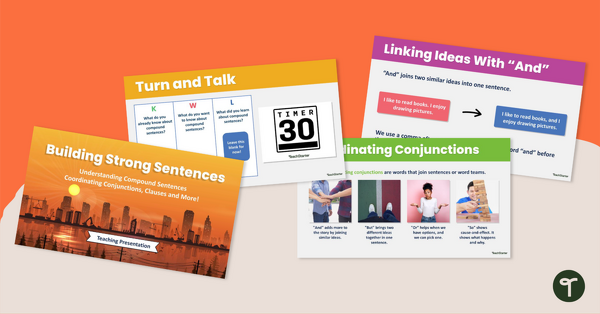
Building Strong Sentences Teaching Presentation
Share this 15-slide teaching presentation with your students to help them understand the key grammar concepts of compound sentences,coordinating conjunctions and clauses.
- Plus Plan
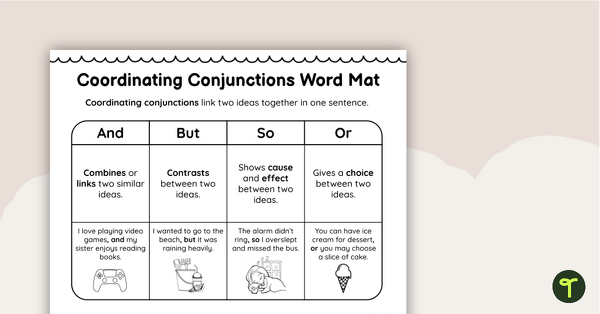
Coordinating Conjunction Word Mat
Boost your students’ writing skills by giving them access to this coordinating conjunctions word mat during language arts lessons.
- Plus Plan
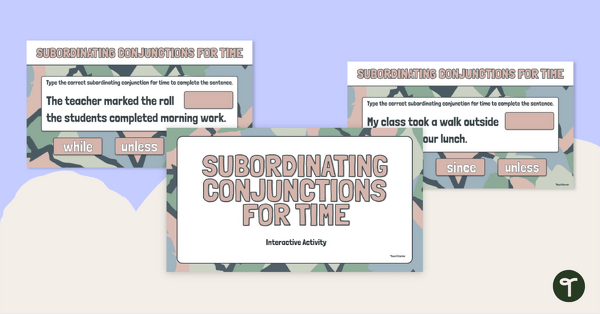
Subordinating Conjunctions (for Time) Interactive Activity
Assign this multiple choice subordinating conjunctions for time interactive activity for your students to correctly identify this type of conjunction in given sentences.